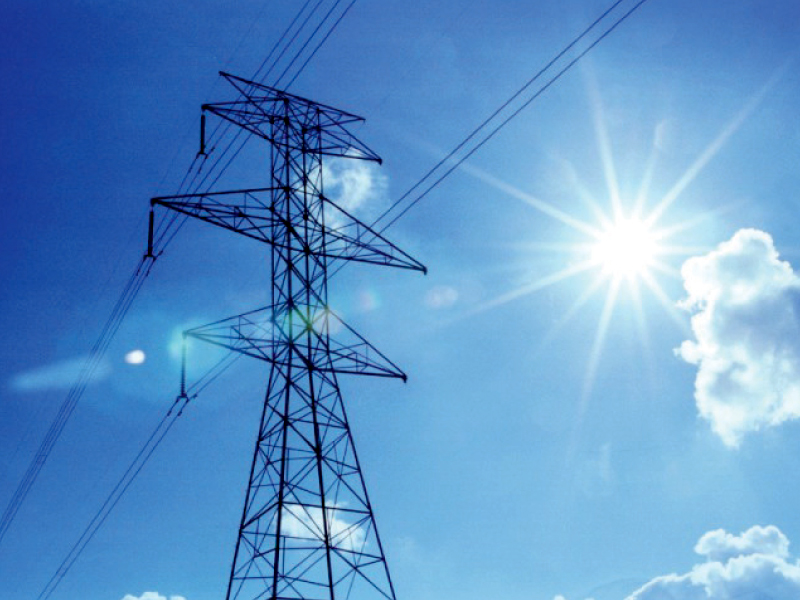
Growing electricity demand is a benchmark of a country’s progress, but at the same time it warrants improvements in the energy sector in order to meet this ever-growing need. The importance of the sector can be realised by the fact that when Israel bombed Palestine’s only functional thermal power plant in 2014’s Gaza-Israel conflict, it wreaked havoc and paralysed the entire Gaza Strip.
Over the years, there has been a lot of hotchpotch on how to meet Pakistan’s growing energy needs. A lot of policies have been scribbled, a lot has been said but the fact is that we have hardly moved an inch from where we started.
Our energy mix, whose large percentage depends on expensive furnace oil, is not sustainable. Due to the high percentage of electricity share being too expensive for the public, we have low recovery rates, more theft, more circular debt and hence more outages.
Fix the problem
There is a dire need to fix this central problem. Of course, the faltering power sector is not a result of any single mischief. But this energy mix issue is something which is very dominant.

Sources: Overseas Investors Chamber of Commerce & Investments (OICCI) Pakistan, Energy Sub Committee, NEPRA’s State of Industry Report 2013
While the world depends on coal for 41% of its generation, we have a ludicrously low 0.04% contribution from coal, and that too thanks to the stuttering Genco-IV plant.
Our neighbouring countries, China and India depend on coal for 69% and 68% of their total generations respectively. For some reason or the other, we have to tap our indigenous coal which amounts to 185 billion tons.
Therefore, in order to extract this potential, we need to invest in coal. In the long term, we will also have to utilise our hydel potential.
In the past, the leaders have even resorted to put the blame of widening supply and demand gap on the growing power consumption. Nowhere has rapid energy growth been more conspicuous than in the world’s most populated country, China. This Asian giant doubled its consumption during the last decade and overtook the US in 2009 and stood at 103.7 quadrillion Btu in 2011 against Pakistan’s mere 2.537 quadrillion Btu (Source: EIA studies).
But China dealt with it by fixing its energy mix, relying on coal mostly and also exploring hydel potential in the form of world’s largest Three Gorges Dam and other projects. India’s energy mix predominantly consists of coal and has been running coal plants with indigenous coal for the last four decades. It is significant to mention here that India’s coal reserves are nowhere near our rich reserves.
There are other examples of countries which are taking steps to devise a more sustainable energy mix. Germany is moving away from gas to renewable energy, but is still planning to depend on coal during this transition period.
Coal impact on environment
There is a growing public opinion in Pakistan that coal pollutes the environment. They probably get astray by the fact that Europe has retired numerous coal plants in the past couple of years. But the reality is that only those plants are getting retired which don’t comply with Environment Protection Agency (EPA) regulations or are highly inefficient.
Developed countries are looking for more renewable resources like solar and wind. But our economy does not permit us to pursue these resources currently on a mass scale.
Coal has the potential to share the burden of the soaring energy demand in coming years but in the long term, we will need to construct dams and utilise our run-of-the-river hydel capacity.
Hydroelectric power
According to the Water and Power Ministry’s Alternative Energy Development Board (AEDB), Gilgit-Baltistan alone has 31 gigawatts of hydel potential. IPPs can be lured in by more encouraging premiums. Laraib Energy (Hubco subsidiary) commissioned the first hydel IPP of Pakistan in 2013 which should set the benchmark for other investors.
Critics argue that it won’t be feasible to construct plants away from load centres, but they need to know that we have already done it in the form of Tarbela and Mangla and we have good example in the form of Brazil which has an astounding 75% installed hydel capacity.
Recently Brazil commissioned a 7,100MW high-voltage direct-current (HVDC) line that runs 2,375 km from new hydropower plants on the Madeira River in the Amazon Basin to major load centres in south-eastern Brazil which became the world’s longest transmission line.
In a nutshell, we aren’t talking about something that is unprecedented. Countries have been working endlessly to set their energy mix right and now it’s our turn. The period of framing policies is over. Now we have to act.
Recently, the government announced upfront tariff for coal which has drawn in good response from investors. It is imperative that we provide them a favourable environment and help complete the projects timely.
Meanwhile, we should also invest in conversion of expensive oil-based units to coal. Diversifying the energy mix is an environmental issue and also a geopolitical one. But for us, it is the matter of survival.
The writer is a NUST graduate with profound interest in current affairs, sports and writing
Published in The Express Tribune, January 26th, 2015.
Like Business on Facebook, follow @TribuneBiz on Twitter to stay informed and join in the conversation.



















1713904359-0/burn-(1)1713904359-0-270x192.webp)
















1713853507-0/MalalaHilary-(2)1713853507-0-270x192.webp)







COMMENTS
Comments are moderated and generally will be posted if they are on-topic and not abusive.
For more information, please see our Comments FAQ